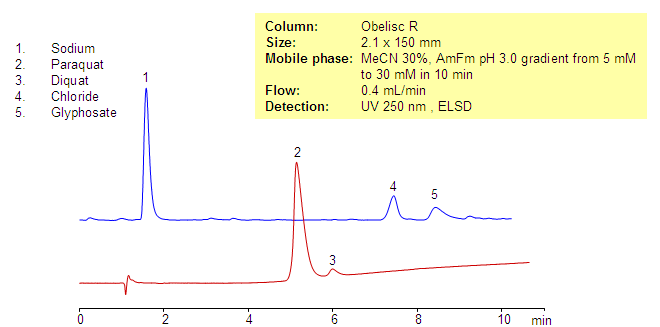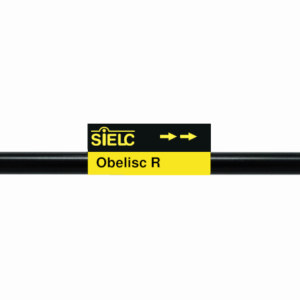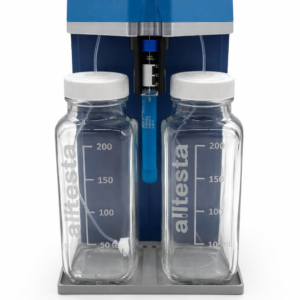
Paraquat, diquat and glyphosate are three of most widely used herbicides in the world. Paraquat and diquat are very polar and very basic quaternary amines. Glyphosate is an aminophosphonic analog of glycine. It is very polar and acidic at most of the pH of the mobile phase. Since glyphosate and the quats have opposite charges no ion-pairing method can be developed for the mixture of basic and acidic herbicides. All three herbicides were separated on the Obelisc R tri-modal column. Paraquat and diquat are retained by a cation-exchange mechanism, and glyphosate is retained by weak reversed-phase and strong anion-exchange mechanisms. This method can be used for analysis of common herbicides in fruits, vegetables, ground water, drinking water and other matrices. Method is LC/MS compatible and can be used to determine trace levels of herbicides.
| Column | Obelisc R, 2.1×150 mm, 5 µm, 100A |
| Mobile Phase | MeCN – 30% |
| Buffer | Gradient AmFm pH 3.0 – 5-30 mM, 10 min |
| Flow Rate | 0.4 ml/min |
| Detection | UV, 250 nm, ELSD |
| Class of Compounds |
Insecticide, Herbicide, Fungicide, Hydrophobic, Ionizable |
| Analyzing Compounds | Paraquat, Diquat, Glyphosate |
Application Column
Obelisc R
SIELC has developed the Obelisc™ columns, which are mixed-mode and utilize Liquid Separation Cell technology (LiSC™). These cost-effective columns are the first of their kind to be commercially available and can replace multiple HPLC columns, including reversed-phase (RP), AQ-type reversed-phase, polar-embedded group RP columns, normal-phase, cation-exchange, anion-exchange, ion-exclusion, and HILIC (Hydrophilic Interaction Liquid Chromatography) columns. By controlling just three orthogonal method parameters - buffer concentration, buffer pH, and organic modifier concentration - users can adjust the column properties with pinpoint precision to separate complex mixtures.
Select optionsDiquat
Glyphosate
Paraquat
Sodium
UV Detection





